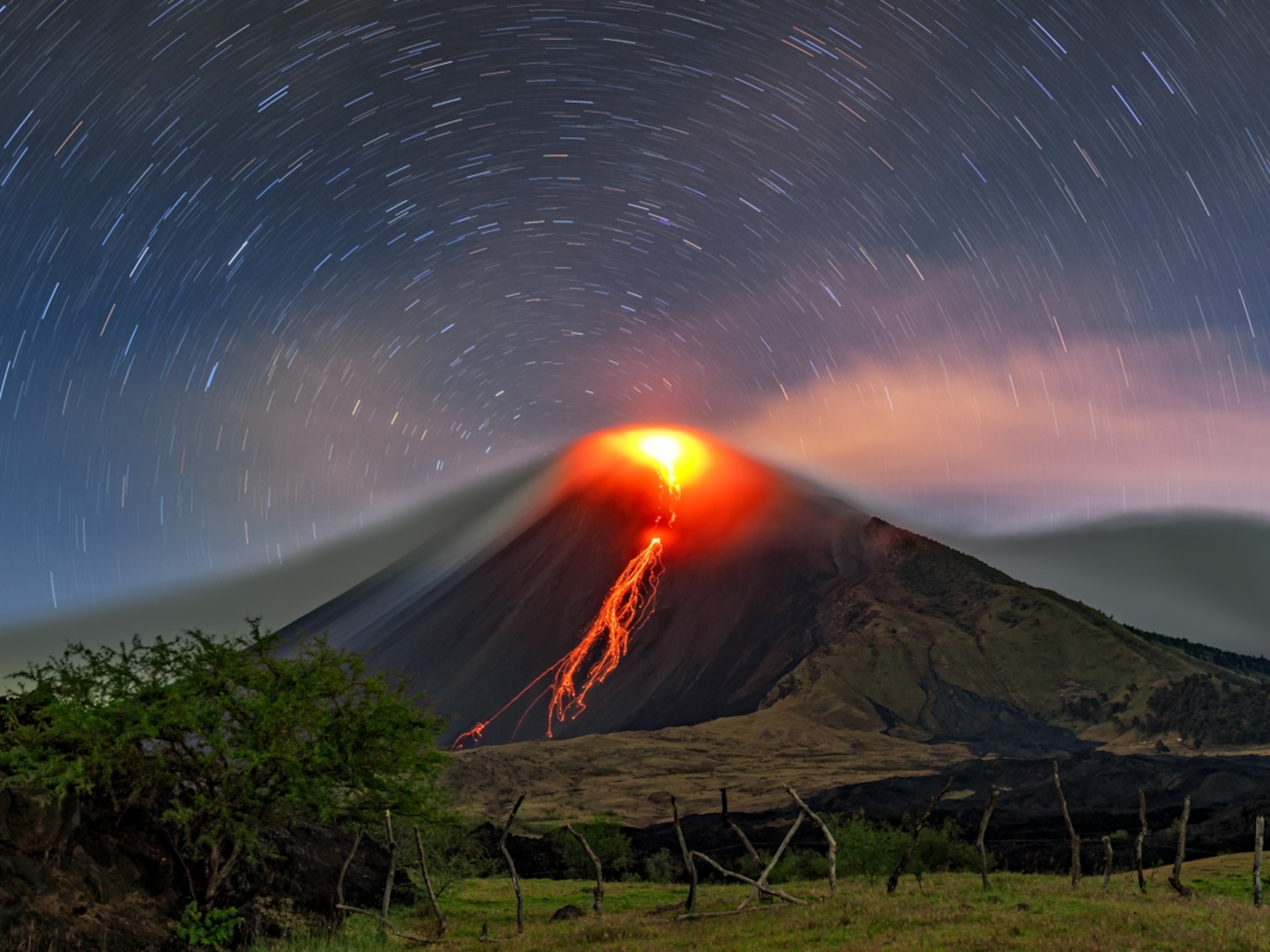Why This Volcano Eruption in the Philippines May Be Especially Deadly
All eyes are on the rumbling Mount Mayon, a perfectly cone-shaped volcano that could spew its dangerous contents at any moment.
The most active volcano in the Philippines is well known for its perfect cone shape—which actually signals how dangerous the volcano can be. Its geology and location could soon combine in explosive, and deadly, fashion.
Mount Mayon, which is located on the big island of Luzon, has been spewing ash, rocks, and mud since January 13 as it prepares to erupt in what is expected to be a big way. On Monday, the Philippine Institute of Volcanology and Seismology raised the alert level to four out of five possible levels, meaning a sizable eruption could happen at any moment.
The alert went out after a loud explosion was heard, indicating high activity. Previous eruptions, like in 2006 and 2009, simply oozed lava from the mouth of the volcano, with small intermittent explosions. The last explosive eruption happened in 2001 and sent ash spewing six miles into the sky.

Mount Mayon is known for its steep-sloped cone. The Smithsonian reports that the volcano’s picturesque symmetry makes it something of a tourist attraction, with climbers trying to get to its rim.
But it is precisely this dramatic shape that indicates how frequent the volcano erupts. Since Mayon’s first recorded eruption, in 1616, it has erupted about 58 times, ranging from sputters to calamities. Four of those eruptions have happened in the last decade, according to the Smithsonian. In 1814, when Mayon exploded, it sent ash several miles into the sky, killing 1,200 people.
Many of Mayon’s eruptions have involved spraying out lava that collects at the rim. As it sputters over the top, it builds up over time, causing the steep slopes that have made it famous.
Dangerous Analogs
For comparison, Mount Vesuvius (the Italian volcano of Pompeii fame) has also erupted over 50 times in recorded history. The famous eruption that killed 2,000 people and preserved the city of Pompeii for hundreds of years under many tons of volcanic ash unfolded in much the same way—explosions, ash raining down, air so thick that it’s hard to breathe, and then finally a pyroclastic flow.
That flow, or surge—an explosive blast that sends ash, lava, and volcanic gas raining down fast onto the sides of the volcano—is the most dangerous part of an eruption. It’s what buried Pompeii, and Mayon may erupt in a similar fashion.
Images of Volcanoes Around the World
Taking Precautions
For this eruption, the government has evacuated more than 34,000 people who live in the centrally located Albay province that houses the volcano, the Washington Post reports. Not everyone who was evacuated lives close to the volcano, but many families could be affected by the mud flow (or lahar) that may be created from the contents of the volcano mixing with heavy rains—the kind that the Philippines often receives.
Mayon is located on the Ring of Fire, the chain of volcanoes that sits along the edge of the Pacific Ocean. There are several subduction zones of various ages colliding slowly together near the Philippines, so volcanic activity is frequent there.
Because the magma under a volcano is constantly shifting, it is difficult to predict the exact details of an eruption. However, given Mayon’s history and the activity it has shown this month, a dangerous and deadly explosion is a distinct possibility.
























